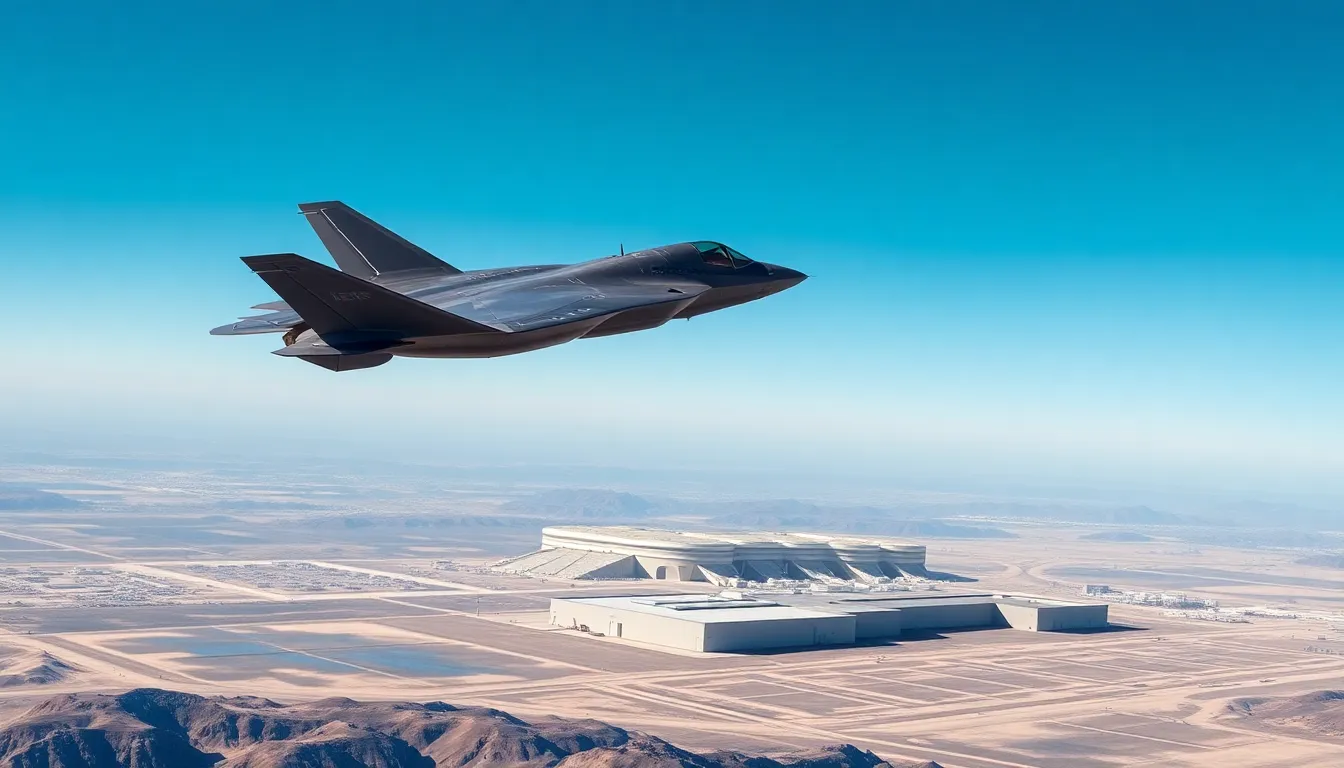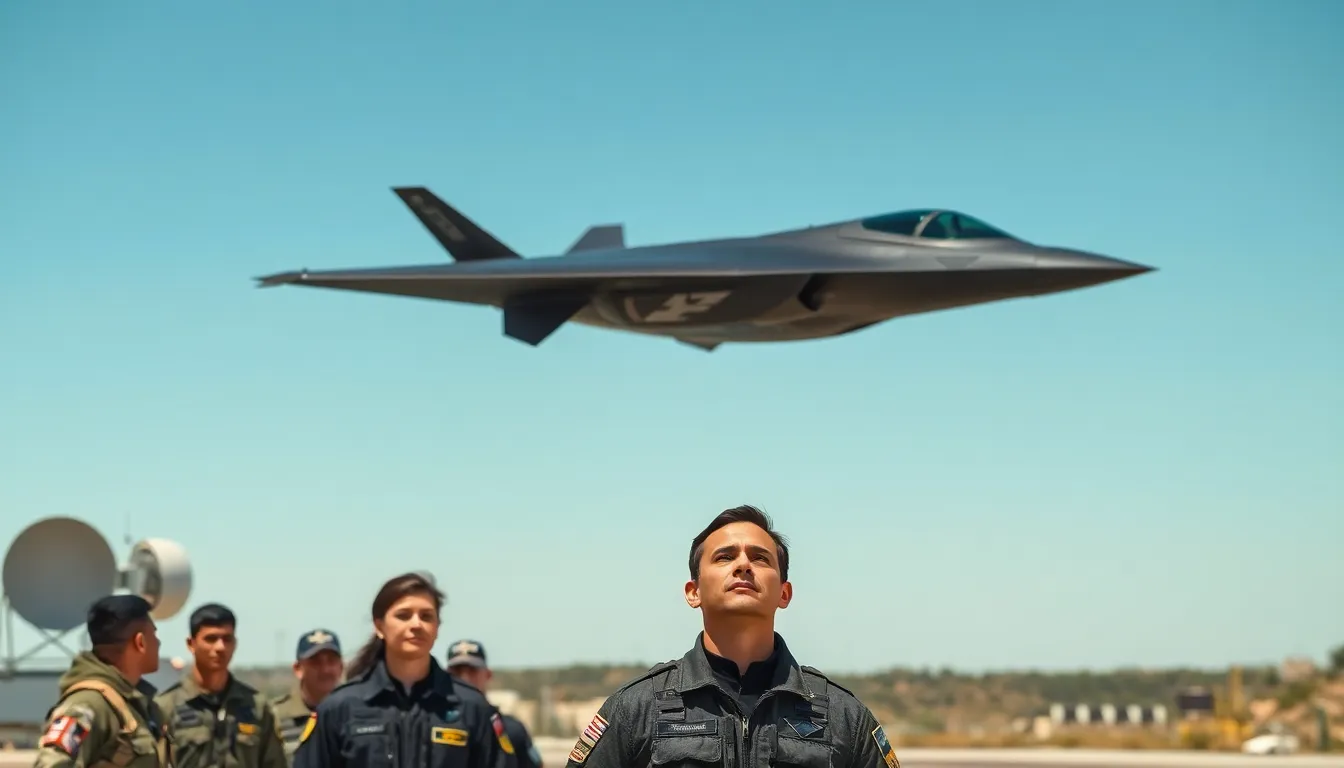Stealth technology isn’t just for spies and superheroes anymore; it’s rapidly transforming the landscape of modern warfare and aviation. Imagine aircraft that can slip past radar like a ninja in a tuxedo—silent, sleek, and oh-so-invisible. This cutting-edge tech is revolutionizing how nations approach defense, making it a hot topic among military enthusiasts and tech geeks alike.
Stealth Technology News
Stealth technology plays a crucial role in military operations and modern defense strategies. This advanced technology enables aircraft and vehicles to avoid detection by radar and other surveillance systems.
Definition And Purpose
Stealth technology refers to methods used to conceal objects from radar, infrared, and visual detection. Specific techniques include shaping the object to deflect radar signals and using absorbent materials to minimize reflections. Its primary purpose lies in enhancing battlefield survivability. By reducing detection, stealth technology increases the effectiveness of missions and protects personnel and equipment.
Brief History Of Development
The development of stealth technology began in the early 20th century, although significant advancements occurred during the Cold War. Initial research focused on radar-absorbing materials. The Lockheed F-117 Nighthawk, introduced in the 1980s, marked a pivotal moment in stealth aircraft design. Subsequent designs, like the B-2 Spirit and F-22 Raptor, continued to refine stealth capabilities and enhance performance. As technology evolved, numerous countries invested in stealth research, ensuring its influence on future military aviation.
Recent Innovations In Stealth Technology

Innovations in stealth technology continue to evolve, significantly enhancing military capabilities worldwide. Recent years have showcased notable advancements in materials and design, further increasing the effectiveness of stealth systems.
Advances In Materials
Advanced materials play a crucial role in enhancing stealth. New composite materials reduce radar cross-section, making detection difficult. Researchers have developed metamaterials that bend light and radar waves, effectively disguising objects. Innovative radar-absorbing materials also contribute to lower visibility, allowing stealth aircraft to operate undetected. These materials not only improve performance but also increase durability and reduce weight, ensuring military assets remain agile in various environments.
Breakthroughs In Design
Design breakthroughs have transformed stealth aircraft. Engineers focus on shaping aircraft to minimize radar returns, employing irregular forms that disrupt radar signals. Such designs integrate internal weapon bays, eliminating external stores that create radar reflections. Drone technology has also influenced these advancements, with unmanned aerial vehicles adopting unique profiles for optimal stealth. Simulations and wind tunnel testing ensure these designs meet rigorous performance and stealth criteria, enhancing mission success rates.
Impact Of Stealth Technology On Military Operations
Stealth technology profoundly influences military operations by enhancing mission success and operational flexibility. This technology allows forces to conduct missions undetected, creating a strategic advantage on the battlefield.
Enhanced Combat Capabilities
Stealth technology boosts combat capabilities through increased situational awareness and reduced vulnerability. Military aircraft equipped with stealth features improve their ability to evade enemy radar systems, launching strikes from closer distances. Moreover, this technology enhances precision in targeting, minimizing collateral damage. Forces can now engage adversaries without revealing their locations, facilitating surprise attacks. Naval vessels utilize similar stealth techniques, making detection more challenging for adversaries. It is clear that the integration of stealth technology significantly amplifies an operation’s effectiveness.
Challenges And Limitations
Despite its advantages, stealth technology faces several challenges and limitations. High development costs present a significant hurdle, often limiting resources for smaller military organizations. Additionally, maintaining stealth features can complicate maintenance routines, increasing operational downtime. Environmental factors, such as radar systems evolving to counter stealth tactics, pose ongoing threats. Dependence on complex technology may also create vulnerabilities during electronic warfare. Thus, while stealth technology enhances military operations, it demands careful consideration of its inherent challenges.
Stealth Technology In Civilian Applications
Stealth technology extends beyond military use and into civilian domains, showcasing its versatility.
Use In Aviation
Companies design aircraft with stealth features to enhance safety and efficiency. Notable examples include quiet supersonic jets that reduce noise pollution while traveling at high speeds. Advanced engineering focuses on shaping the aircraft to minimize radar visibility, allowing corporations to operate in sensitive areas without alarming the public. Some manufacturers invest in materials that absorb radar waves, providing additional concealment during flight. Increased demand for eco-friendly designs encourages innovations that leverage stealth technology while maintaining environmental responsibility.
Potential In Other Fields
Stealth technology finds applications across various sectors beyond aviation. In automotive industries, manufacturers develop vehicles that incorporate sound-dampening materials to reduce noise levels. Law enforcement and security organizations use radar-evading technology to enhance surveillance capabilities during operations. Additionally, advancements in building designs employ stealth techniques, effectively mitigating sound transmission in urban environments. Researchers continue exploring these applications, focusing on how stealth can enhance performance while meeting regulatory requirements. The potential for stealth technologies in various civilian domains remains vast, with many opportunities for further integration.
Future Trends In Stealth Technology
Advancements in stealth technology are shaping the future of military and civilian applications. Significant innovations continue to emerge, transforming capabilities across various sectors.
Emerging Technologies
Recent developments in radar-absorbing materials demonstrate improved effectiveness in reducing detection. Researchers create metamaterials that manipulate electromagnetic waves, enhancing stealth properties for various objects. 3D printing technology enables rapid prototyping of complex designs, allowing for more refined and efficient stealth configurations. Unmanned systems increasingly adopt stealth features, emphasizing the role of drones in modern warfare. Companies incorporate artificial intelligence to optimize stealth operations, improving situational awareness and mission execution.
Predictions For The Next Decade
The next decade forecasts significant shifts in stealth technology utilization. Military forces will likely adopt hypersonic vehicles equipped with enhanced stealth capabilities, allowing for rapid, undetected deployment. Growing interest in civilian applications suggests that commercial aircraft might integrate stealth features, catering to noise-sensitive markets. Innovations in cloaking materials could lead to near-invisibility capabilities for ground vehicles. Industries will explore dual-use technologies, aiming for advancements that blend military and civilian interests seamlessly. Integration of quantum technologies could revolutionize military tactics, raising the stakes in stealth operations significantly.
Conclusion
Stealth technology is poised to redefine both military and civilian landscapes. Its continuous evolution not only enhances military effectiveness but also opens doors to innovative applications in aviation and beyond. As advancements in materials and design emerge, the potential for greater operational efficiency and safety becomes increasingly tangible.
The future promises exciting developments with the integration of artificial intelligence and emerging technologies. This dynamic field will likely shape strategic military tactics and redefine civilian aircraft design. As researchers and engineers continue to push boundaries, the impact of stealth technology will resonate across multiple sectors, highlighting its significance in an ever-evolving technological landscape.

